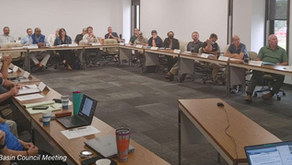Drinking Water Contaminants Impact Project Development
- JD Solomon
- Nov 5, 2021
- 2 min read

USEPA’s draft Contaminant Candidate List (CCL 5) includes 66 chemicals, three chemical groups (per- and polyfluoroalkyl substances (PFAS), cyanotoxins, and disinfection byproducts (DBPs)), and 12 microbes, which were selected from a universe of chemicals used in commerce, pesticides, biological toxins, disinfection byproducts, and waterborne pathogens.
EPA requested comments on the Draft CCL 5 and the process used to select the contaminants in July. Contaminants listed on the CCL may require future regulation under the Safe Drinking Water Act (SDWA). The comment period closed on September 17, 2021.
Contaminants on the CLL are currently not subject to any proposed or promulgated national primary drinking water regulations but are known or anticipated to occur in public water systems.
How does this impact public projects? The list is broad – USEPA describes it "from a universe of chemicals" – and not all chemicals will be included. So for most water utilities, the impacts will not be directly on their current 5- or 7-year capital improvement programs. However, many states like North Carolina and New Jersey are already requiring higher standards than those currently used by USEPA. And with more third-party citizen science and lower laboratory detection levels, the planning and design for the next level of water system improvements should already be underway.
How does this impact private projects? The short answer is that water rates will be increasing throughout the country. The key question for your local water utility is whether they have already made some of the improvements (and the rates reflect it) or whether they have not (meaning future rates are going up). The good news is that many employees and shareholders are aware of the underlying environmental issues and water their water to be clean. The bad news is they do not understand that operating costs are going up.
JD Solomon, Inc provides services at the nexus of the built and natural environment. Contact us for more information on business case evaluations, tradeoffs analysis, and third party reviews relative to new project development.




Comentários